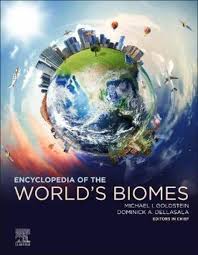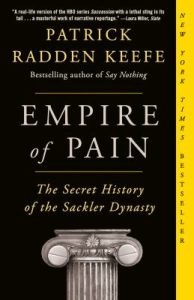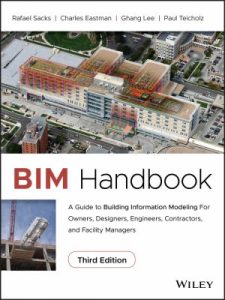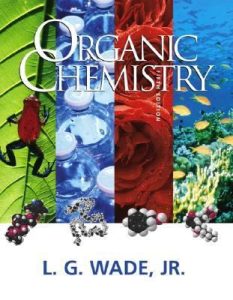Information Ecosystem
Books
Learning Objectives
- Describe the key characteristics and purposes of different types of books (academic, reference, popular, and technical/trade) and explain how each type supports various information needs.
- Explain the value of academic books for research, especially for gaining in-depth understanding and identifying existing scholarship.
- Select relevant sections or chapters within academic books to support your research without reading the entire book.
Overview
Books have been a staple of both learning and entertainment since Gutenberg invented the printing press. Most books are produced by traditional publishers for a clear reason, including to entertain, inform, educate, or teach. This chapter offers a brief overview of book types, with a primary focus on academic books used for research.
Types of Books
While academic books are generally the best choice for research purposes, there are many types of books that fit a variety of information needs. This is a list of common book types and their characteristics:
Academic Books
Academic books are a great resource for research. They offer in-depth information and can help break down complex topics into more manageable parts. Books often reflect years of research and can show you what’s already been studied and where there’s room for new ideas.
One of the biggest benefits of academic books is their bibliographies or works-cited pages. These can lead you to even more useful sources like journal articles, research studies, government reports, experts, or other books. Academic books also help you connect to how scholars in a field think about a topic, giving you a clearer picture of key theories, foundational knowledge, and important researchers.
The good news? You don’t have to read the whole book. Focusing on one relevant chapter or section is usually enough. Many academic books are actually collections of essays or articles, so you can zero in on the parts that matter most for your research.
Academic books might be useful to you if you need…
- In-depth coverage of a subject
- An overview of a big topic
- Background information
- Lists of additional sources or bibliographies
Academic books might be less useful if…
- You need the most up-to-date research on an evolving topic
- Your topic is very recent/new
- Your information need is small or narrow
Structure & Content: Comprehensive works with chapters, tables of contents, indexes, and extensive references
Authorship: Written by scholars or experts and reviewed by field editors
Purpose: To inform, analyze, and provide an in-depth understanding
Audience: Primarily scholars, researchers, and educated readers
Example:

Reference Books
Reference sources are useful because they provide quick, reliable overviews of topics, helping you understand key facts, definitions, and background information without needing to read lengthy texts. They are great for clarifying unfamiliar terms, getting context before deeper research, and finding starting points for more detailed exploration. Their concise, organized format makes it easy to locate specific information fast, making them especially helpful early in the research process.
Structure & Content: Concise entries that may include references and author identification
Authorship: Compiled by experts and reviewed by editors
Purpose: To provide brief overviews of topics
Audience: From experts to the general public
Example:

Popular Books
Popular books can provide insight into current trends, cultural perspectives, personal experiences, or practical advice in areas like health, relationships, or self-improvement. While they may not be scholarly, popular books can help you understand how a topic is viewed by the public and often serve as a starting point for further research or personal learning. Also, popular books can just be fun to read!
Structure & Content: Can include fiction, biography/autobiography, and non-fiction
Authorship: Written by novelists, biographers, journalists, and other professional writers
Purpose: To entertain, inform, or provide advice or self-improvement
Audience: General public
Example:

Technical Books & Trade Manuals
Technical books and trade manuals offer clear, practical information on specific skills, tools, processes, or industries. They are often written by expert practitioners and are designed to help readers solve problems, follow procedures, or understand how something works. These resources are especially valuable for professionals, students, and trainees who need step-by-step instructions, diagrams, or real-world guidance in fields like engineering, healthcare, technology, construction, and more.
Structure & Content: Clearly organized and often include visuals like diagrams or photos to help explain the content
Authorship: Experts and practitioners in the related field, including technical writers
Purpose: Designed to provide instructions, guidance, or information on a specific topic, process, product, or industry
Audience: Primarily users of a product, employees of a company, or students in a related course
Example:

Textbooks
Textbooks provide structured, comprehensive coverage of a subject, making them ideal for learning foundational concepts and building knowledge step by step. They are often written by subject experts and reviewed for accuracy, which ensures reliable and up-to-date content. Textbooks typically include explanations, examples, visuals, review questions, and references making them excellent tools for both classroom learning and independent study.
Structure & Content: Structured by units or chapters aligned with a course syllabus; often includes summaries, discussion questions, and learning objectives
Authorship: Written by subject experts, sometimes in collaboration with educators, and often reviewed or approved by academic institutions
Purpose: To teach foundational concepts and skills in a structured learning environment
Audience: Primarily students and instructors in academic courses from high school through college levels
Example:

Keep in mind that books have differing levels of oversight and just because something is in a book format, does not automatically make it a reliable source. When looking for academic books to use in your research projects, look for publishers connected to universities (such as Oxford University Press or Harvard University Press) or reputable academic publishers (like Routledge, Wiley, Norton, or Macmillan). Always verify a publisher’s credibility through trusted sources, more on verifying sources in the “Evaluating Information” section of this book.
A Note on Self-Publishing
Vanity presses offer authors the ability to publish their work by paying for the production costs. Unlike traditional publishers, these services typically skip formal editorial review processes, which can impact the content’s quality and credibility. A similar model is Print-on-Demand or POD publishers; these publishers produce books only when orders are placed, helping authors avoid large upfront printing costs. While this model can be legitimate and cost-effective, it may lack the editorial standards and quality control typically found in traditional publishing.
Knowledge Check
Format & Access
Books come in many formats like print, audio, and e-books. What you use may be influenced by personal preference or what happens to be available. Use what works best for your needs. See the “Search@UW as a Tool” chapter of this book to learn more about finding books through the library.
Reflection
- Have you ever used just a chapter or section of a book for a project? How did that approach help (or not help) your research process?
- Which book format do you prefer (print, eBook, or audiobook), and why? How does your preferred format affect how you find and use information?
Attributions
This chapter contains material adapted from:
- The Information Literacy User’s Guide: Marietta College Remix Copyright © 2024 by Linda Lockhart and Peter Thayer is licensed under a CC BY-NC-SA 4.0 license, except where otherwise noted.
- Your Research Journey at Portland State University Library Copyright © 2020 by Amy Stanforth is licensed under a CC BY-NC-SA 4.0 license, except where otherwise noted.

